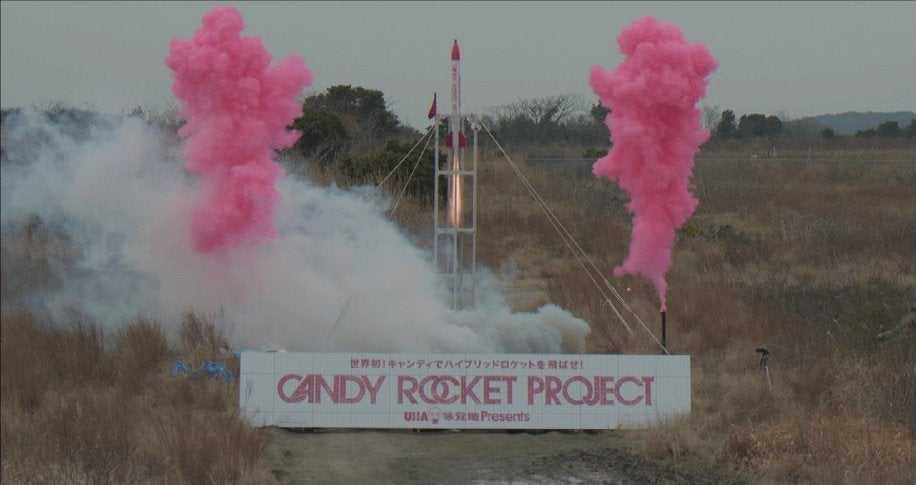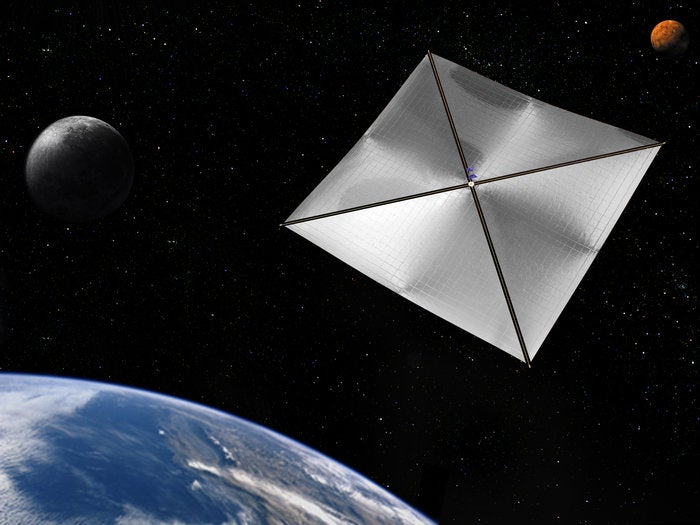

Nasa tests technology to de-orbit and bring back satellites to earth
TechEdSat-4, a small satellite launched from the International Space Station (ISS) by Nasa successfully entered its orbit, paving the way to test technology that could allow returning satellites from their orbit to Earth’s atmosphere.
Approximately 30 minutes after the launch by Nanoracks CubeSat Deployer, the free-flying TechEdSat-4 deployed its parachute-like exo-brake, which is designed to operate as an aerodynamic drag device.
TechEdSat-4 satellite was due to perform a series of manoeuvres, which will cause the satellite to de-orbit and re-enter the Earth’s atmosphere.
The spacecraft is said to have demonstrated satellite-to-satellite communications technologies such as providing accurate information about the spacecraft health and position.
Solar Impulse 2 starts first global flight

Solar Impulse 2 (Si2) started its first flight from Abu Dhabi in a record-breaking attempt to travel across the world using zero fuel.
How well do you really know your competitors?
Access the most comprehensive Company Profiles on the market, powered by GlobalData. Save hours of research. Gain competitive edge.

Thank you!
Your download email will arrive shortly
Not ready to buy yet? Download a free sample
We are confident about the unique quality of our Company Profiles. However, we want you to make the most beneficial decision for your business, so we offer a free sample that you can download by submitting the below form
By GlobalDataThe single-seater experimental solar aircraft with pilot André Borschberg onboard is heading to Muscat in Oman, as part of the 35,000km journey in 25 flight days over five months.
Solar Impulse founders and Swiss pilots André Borschberg and Bertrand Piccard are managing the solar-powered flight.
The aircraft will enter Omanian aerial space at an altitude of 3,600m and will head to Muscat reaching an altitude of approximately 5,800m.
In Muscat, Piccard will take over the flight and the aircraft will be prepared to cross the first water body, the Arabian Sea.
148 feared dead as Airbus A320 crashes in France
An Airbus A320 aircraft of Lufthansa’s Germanwings budget carrier flying from Barcelona to Dusseldorf crashed in a remote area of southern France, with 148 passengers and crew members onboard.
The aircraft is reported to have crashed near Barcelonette town in the southern Alps.
French President Francois Hollande said: "The conditions of the accident, which have not yet been clarified, lead us to think there are no survivors.
"The accident happened in a zone that is particularly hard to access."
Candy-powered hybrid rocket flight launched in Japan

A working group organised by Japanese confectioner UHA Mikakuto partnered with aerospace experts to launch the world’s first candy-powered hybrid rocket.
During the flight, the hybrid rocket reached an altitude of 813ft.
Space research and rocket development experts involved in the Candy Rocket Project include Akita University’s Akita Space Development Institute director Yutaka Wada, Wakayama University Institute for Education on Space director Hiroaki Akiyama, and Seiichi Sakamoto of the NAOJ Chile Observatory.
Siemens unveils electric motor for aircraft

Siemens unveiled an electric motor for aircraft with take-off weights of up to 2t.
Claimed to be five times more powerful than existing aircraft drive systems, the new motor weighs 50kg and generates 260kW of power.
The aircraft drive system could lead the way for electrically powered aircraft, the company said.
The motor incorporates advanced simulation and lightweight construction techniques, which support its weight-to-performance ratio of 5kW per kg, compared with less than 1kW per kg offered by electric motors in industrial applications.
The motor has rotational speeds of 2,500 revolutions per minute, eliminating the need for a transmission to drive propellers.
FAA aims to streamline process for commercial drone operations in US

The US Federal Aviation Administration (FAA) reportedly considered streamlining the process of securing a certificate of authority for using drone aircraft in business operations.
Sources familiar with the matter were quoted by Reuters saying that the agency is preparing to launch new procedures, which will eliminate the need for exemptions for approval.
The US banned commercial drone flights in the national airspace with exceptions in some cases.
If the new procedures come into effect, companies with exemptions will no longer be required to obtain a new certificate for each new use of drones.
United Technologies considers selling Sikorsky helicopter unit
United Technologies (UTC) said that its board of directors approved a review of strategic alternatives for its Sikorsky aircraft, which could include potential sale of the unit.
The company, known for the production of Black Hawk helicopters, generated $7.5bn revenue from Sikorsky products.
Based in Hartford, Connecticut, UTC specialises in providing high technology products and services to building and aerospace industries.
UTC expects to conclude its strategic review before the end of 2015. However, the company said it has not taken any decision on the timing or terms of any transaction.
ESA seeks new techniques for clearing derelict satellites from space

The ESA sought new designs and techniques to collect and remove derelict satellites in orbit.
The agency aims to develop common modular de-orbit systems and techniques that can be incorporated into the future satellites manufactured in Europe.
The companies and institutes will be asked for proposals on low-orbit satellite platforms in April.
ESA Clean Space initiative head Luisa Innocenti said: "Space industry is facing up to the problem of achieving compliance with mitigation regulations, while minimising any impact on the cost and effectiveness of their missions."
"A shortlist of around 25 mitigation methods will be finalised, followed up by work to create detailed workplans, which will then be presented to next year’s ESA Ministerial Council for approval."
MH370 interim report identifies no definitive cause for accident
An interim report into the Malaysia Airlines flight MH370 accident did not identify a definitive cause for the disappearance of the aircraft.
The Beijing-bound aircraft with 239 passengers and crew onboard disappeared off the radars over the Indian Ocean on 8 March 2014.
The interim report stated the solid state flight data recorder (SSFDR) underwater locator beacons (ULB) battery expired in December 2012 and was not replaced.
The report said: "There were no behavioural signs of social isolation, change in habits or interest, self-neglect, drug or alcohol abuse of the captain, first officer and the cabin crew."
UK committee calls for balance between drone development and regulations

The unmanned aircraft industry needs to come up with new technologies to make Europe a leader in the segment, but regulators need to take necessary measures to control the use of drones, observed a UK sub-committee.
The development of drones or remotely piloted aircraft systems (RPAS) is currently facing a problem, the House of Lords EU Internal Market, Infrastructure and Employment Sub-Committee observed.
The Civilian Use of Drones in the EU report released by the committee said: "Industry is reluctant to invest in developing the necessary technologies without certainty about how they will be regulated, while regulators are reluctant to develop standards until industry comes forward with technologies for validation."


